“Chamomile”
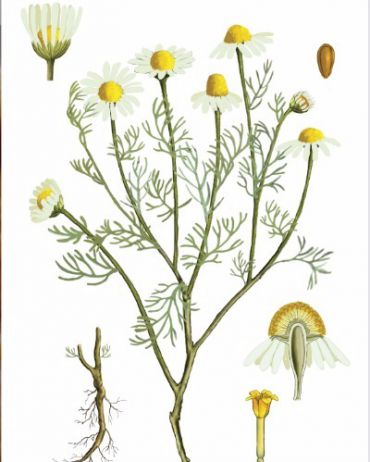
Chamomile was known to Ancient Greeks as ‘Ground Apple’ because of its smell, while Anglo-Saxons referred to it as ‘Maythen’, one of the nine sacred herbs given to the world by the God Woden.
- Parkinson, in his Earthly Paradise (1656), writes:
-
‘Camomil is put to divers and sundry users, both for pleasure and profit, both for the sick and the sound, in bathing to comfort and strengthen the sound and to ease pains in the diseased.’
Latin binomial: Matricaria chamomilla/ Chamomilla recutita
Common Name(s): Chamomile (German)
Family: Asteraceae
Part(s) used: Flower Heads – Harvest throughout summer and dry quickly to allow retention of scent.
NOTE: Difference between German and Roman Chamomile: Roman chamomile: Chamaemelum nobile / Anthemis nobile, is the variety often referred to in English herbal texts. It has similar uses to German Chamomile; as a digestive, bitter, antispasmodic, and mild sedative. Roman Chamomile can also be used topically.
Qualities:
Bitter, mainly warm and moist (Ody).
For ‘constricted liver chi’; heat rising causes irritation to rise.
Emotional/Energetic:
Indicated where there is tension and heat. Nurturing and comforting herb.
For ‘Babies of any age’, meaning it can be well suited to adults who are acting childish, impatient, out of humour, headstrong, fretful.
Fevers that combined with inflammation, but are not complete. Fever may come and go and is accompanied by perspiration.
An excellent remedy for those who are exhausted from illness and irritable about their situation. It calms while rebuilds nervous system function.
Constituents:
- Volatile oils (blue) – including azulenes
- Flavonoids – including rutin, apigenin, quercetin, patuletin, luteolin (anti-inflammatory)
- Valerianic acid
- Coumarins
- Tannins
- Salicylates
- Cyanogenic Glycosides
- Armonatic terpenes – alpha-bisabolol (gastroprotective effects and making sulfur groups more bioavailable – which may increase glutathione detoxification and antioxidant pathways) and its oxidation products (azulenes, including chamazulene)
- Matricin – a sesquiterpene lactone – is metabolised into chamazulene which possesses potent anti-inflammatory activity – particularly to the gastrointestinal tract. These have been shown to inhibit COX-2 enzymes and have platelet-stabilising effects.
“Chamomylle… is very agreeing unto the nature of man and… is good against weariness…”- William Turner, 1551
 Actions:
Actions:
- Anti-inflammatory
- Antioxidant (inhibits lipid peroxidation)
- Mild bitter
- Muscle relaxant
- Antispasmodic / Spasmolytic
- Antiulcer and gastroprotective (via glutathione and ACE regulation)
- Choleretic – stimulates bile
- Promotes Wound Healing
- Deodorant
- Diaphoretic (when prepared as hot tea)
- Anti-bacterial
- Anti-puritic
- Bacteriostatic
- Stimulates skin metabolism
- Mild Sedative (ABC Clinical Guide to Herbs, p.51; Braun & Cohen, p.300). Decreases sleep latency & demonstrates benzodiazepine-like activity.
- Carminative
- Essential oil shown to decrease levels of stress-induced ACTH levels
- Immunostimulating (increases T cell formation)
- Female hormone support – gentle
- Nervine – balance the CNS
- Tonifying and rebuilding for the nervous system
- Neuralgic pain (Grieve)
- Dorothy Hall says that Chamomile has an affinity with the 10th Cranial Nerve – Vagus Nerve
Indications:
Soothing and calming for children. Teething in infants.
Excellent remedy for children.
Healing of wounds – topical. Inflammatory modulating properties on contact.
Mucosal surface healing – upper respiratory and sinus / nasal. Allergic rhinitis etc. Increase mucosal barrier function.
STEAM INHALATION – boiling water in bowl with chamomile flowers infused and sit with towel over head.
Internal uses-
- Gastrointestinal spasms – stomach cramping, dyspepsia
- Constipation – said to help soften and died faecal matter in colon
- Diarrhoea in children (combined with pectin)
- Nervous irritability in children – teething in children
- Colic – combine with Lemon Balm, Vervain, Licorice and Fennel
- GORD
- Reducing PPI medication
- Teething in children
- Inflammatory diseases of the GI tract
- Ulcers – NSAID exposure/stress/alcohol. Reduces healing time. Promotes granulation and tissue regeneration
- Indigestion
- Flatulence
- Bloating
- Slight anxiety w/ sleep latency troubles
- Potential use in drug withdrawal – morphine etc.
- Sedation (essential oil can be used for thisas well, and tea prep.) – improve mood
- General Anxiety Disorder (GAD) – anxiety scores significantly reduced
- Depression (where there is both depression and anxiety)
- Anxiety with co-morbid depression
- Increasing glutathione (may make sulfur groups more bioavailable)
- MOUTHMASH – analgesic for oral mucosa, useful for Mouth Ulcers
External uses –
- Decreases weeping
- Eczema
- Inflammatory dermatosis
- Neurodermatitis
- 2nd degree burns
- Mastitis
- Decrease pigmentation – UV-induced and liver spots
- Wound treatment –
- ESSENTIAL OIL : anti-microbial/fungicidal activities against gram-positive bacteria, has viridical activity against HSV type 2.
- EXTRACTS: Seen to work on gram-negative bacteria such as E.coli, H.pylori. Herpes simplex virus.
- Ano-genital inflammation (baths and irrigation)
Other – Diarrhoea in children and common cold. (ABC Clinical Guide to Herbs, p.51)
Herbal Picture (Dorothy Hall):
The person who will benefit from Chamomile will live their stresses over twice… or more! They enjoy re-telling tales of their daily dramas. Hall describes this as ‘verbal diarrhoea’ that is a key part of their ability to de-stress and unload after the day is done.
Hunger, eating and digestion can most often come low on the list of priorities. When they do eat, there is bloating, wind, cramps etc. The person who needs chamomile does not digest and eat well when in the stress zone, they should relax and drink a cup of chamomile tea before eating.
There can be a ‘cold’ feeling in the stomach. Forced food eaten may feel heavy. This can hinder sleep.
They over-react to many substances, e.g. allergies due to over-reaction. Nervous exhaustion leading to a ‘worn out’ vagus nerve. Hay-fever/food sensitivities. Hyperactivity, heart palpitations, breathing difficulty. Emotional exhaustion are connected with these sensitivities and when they may or may not occur.
Contraindications/ Cautions:
Known hypersensitivity to plants of Asteraceae family – may cause skin reaction – RARE.
No known restrictions during pregnancy and lactation. (ABC Clinical Guide to Herbs, p.52). Caution in infants under 12 months.
DRUG INTERACTIONS:
Benzodiazepines – theoretical additive CNS depressant & antispasmodic effect with concurrent. Monitor.
Warfarin – cases of internal haemorrhage – OBSERVE
Drugs metabolised by CYP3A4 – Chamomile has shown to inhibit cytochrome 3A4 enzymes. Observe for interactions
Dosage:
Internal –
Dried flower heads, 2-8g, 3 times daily as infusion. 5g single dose
Infusion –
50ml boiling water poured over 3g dried flower and steeped, covered, for 5-10 minutes – 3-4 times daily between meals for gastrointestinal complaints
Fluid Extract –
1:1. 38-53% ethanol (v/v), containing minimum 0.3% (m/m) blue volatile oil, 1-4ml, 3 times daily.
1:2 3 – 6 mL/day of high grade LE OR 20-40 mL per week
Tincture – 1:5, 45% ethanol, 3-10ml, 3 times daily (Braun & Cohen)
External – Bath additive…50g dried flower to 10 L water.
DURATION of TREATMENT:
GIT Sx – works quickly
CHRONIC Tx – may need to be used long-term
OTHER USES:
- INFUSION: Take for irritable bowel syndrome, poor appetite & indigestion. Drink a cup a night for insomnia, anxiety and stress. Add 200-400 ml strained infusion to a baby’s bath water at night to encourage sleep
- POULTICE: dried flowers & hot water – apply directly to skin.
- TINCTURE: Use for irritable bowel, insomnia & tension
- OINTMENT: Use for insect bites, wounds, itching eczema, and for anal/vulval irritation
- MOUTHWASH: Use infusion for mouth inflammation
- EYEWASH: Dissolve 5-10 drops of tincture in warm water and use for conjunctivitis or strained sys (check for allergy first)
- INHALATION: Add 2 tsp flowers to basin of boiling water for catarrh, hay fever, asthma or bronchitis
- ESSENTIAL OIL LOTION: For eczema, use 5 drops chamomile oil to 50 ml distilled witch hazel
MENSTRUAL TEA CYCLING FOR FEMALE HORMONE BALANCE:
Peppermint or spearmint tea – 1 cup daily – in first half of cycle – day 1 – 14
Chamomile tea – 1 cup daily – in the second half of the cycle – day 14 – 28
Combinations:
Dandelion & Alfalfa – support liver & deal with the physical Sx of sensitivities/allergies
References & Links to Articles:
German Chamomile ABC Clinical Guide Monograph
Chamomile Monograph Alt Med Rev 2008
Chamomile General Anxiety Disorder AMSTERDAM
Pharmacological Properties of Chamomile
Braun & Cohen (2010). Comprehensive Guide to Herb and Nutritional Supps
Hall, Dorothy (1988). Dorothy Halls’ Herbal Medicine
Ody, Penelope (1998). The Herb Society’s Complete Medicinal Herbal. Milan: Dorling Kindersley
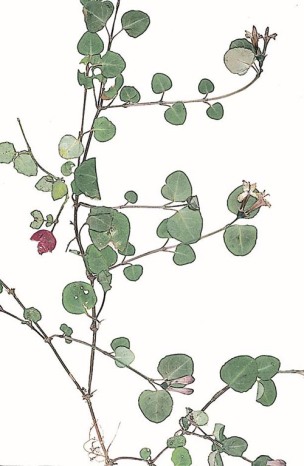



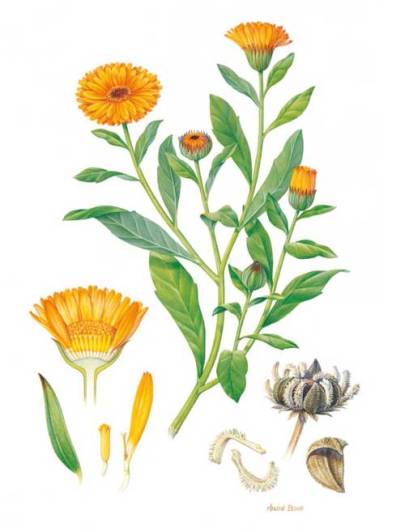
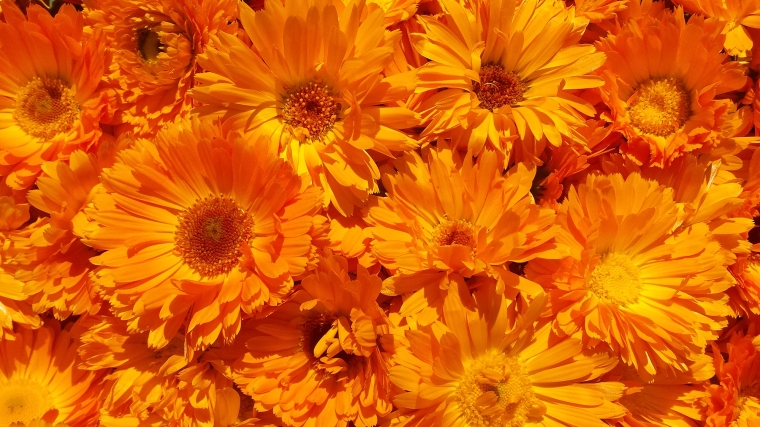 Indications:
Indications: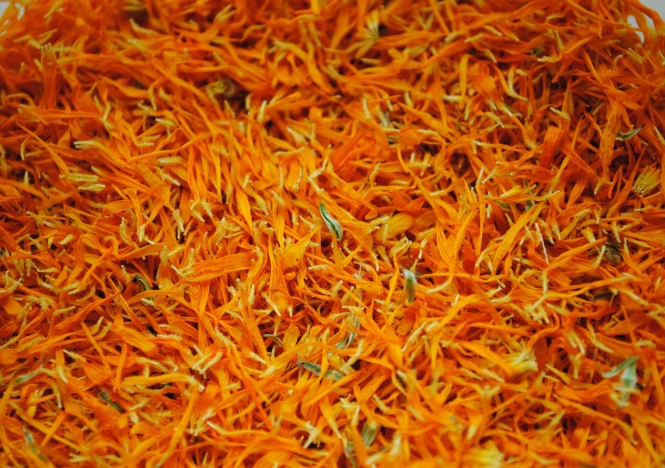
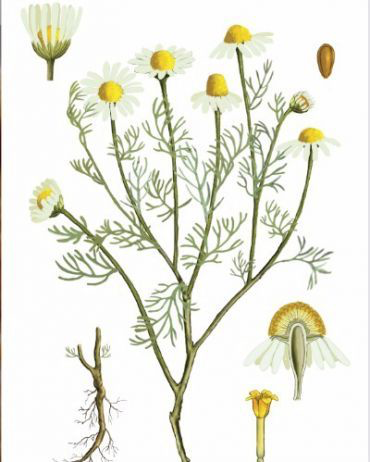

 Actions:
Actions: